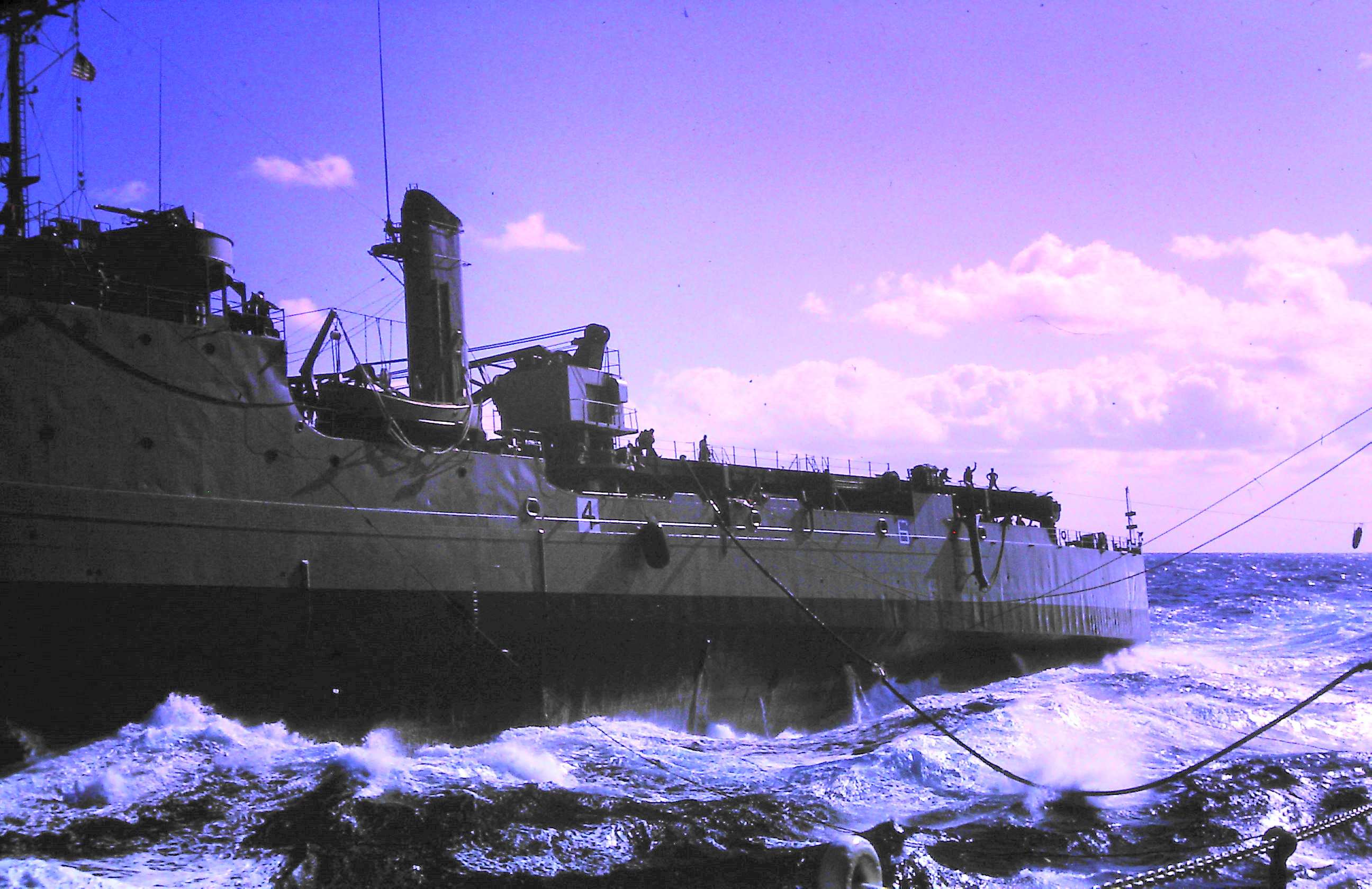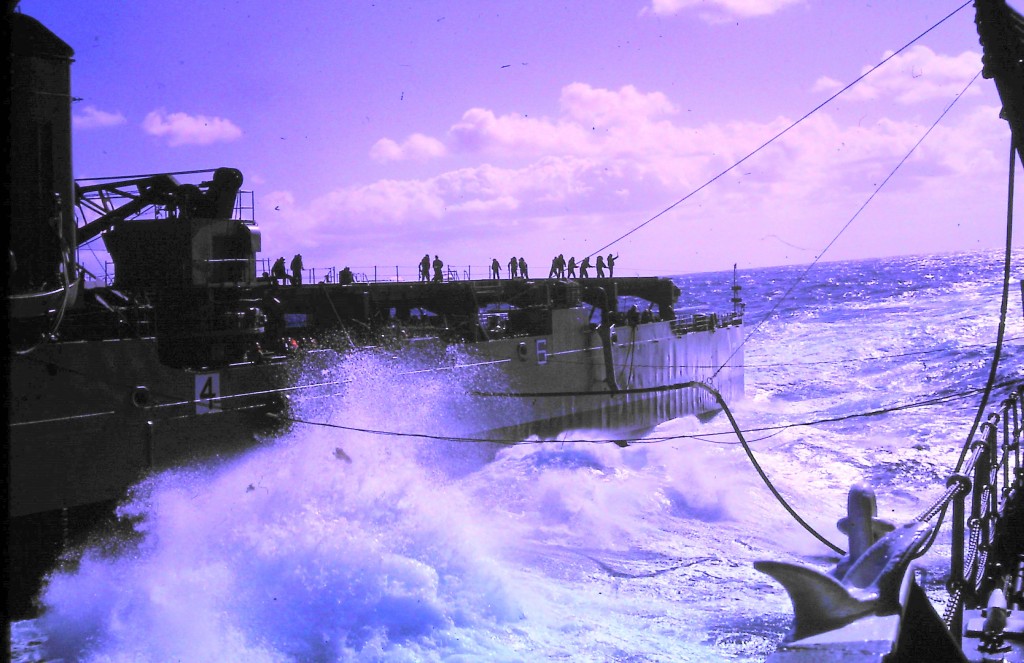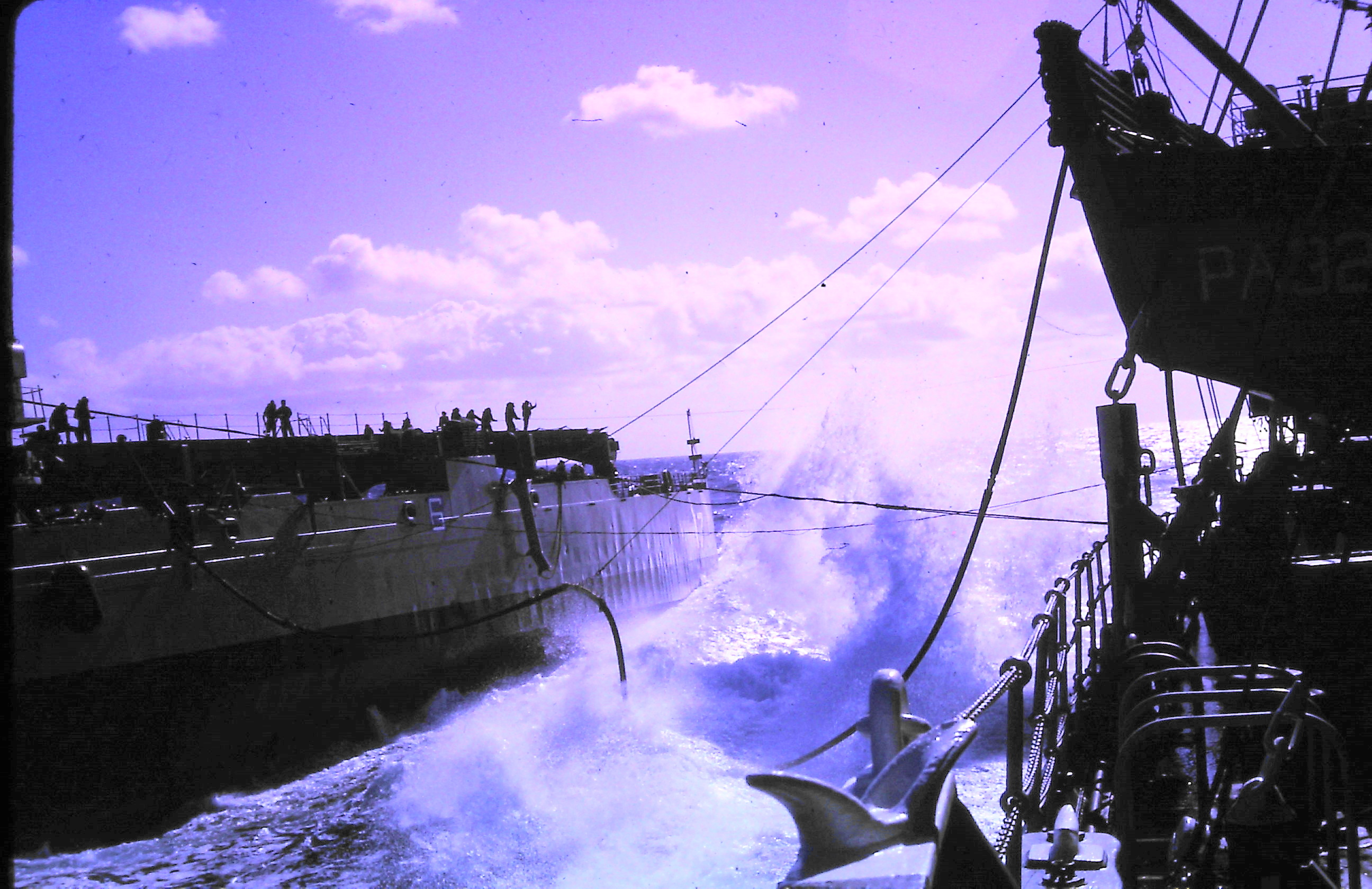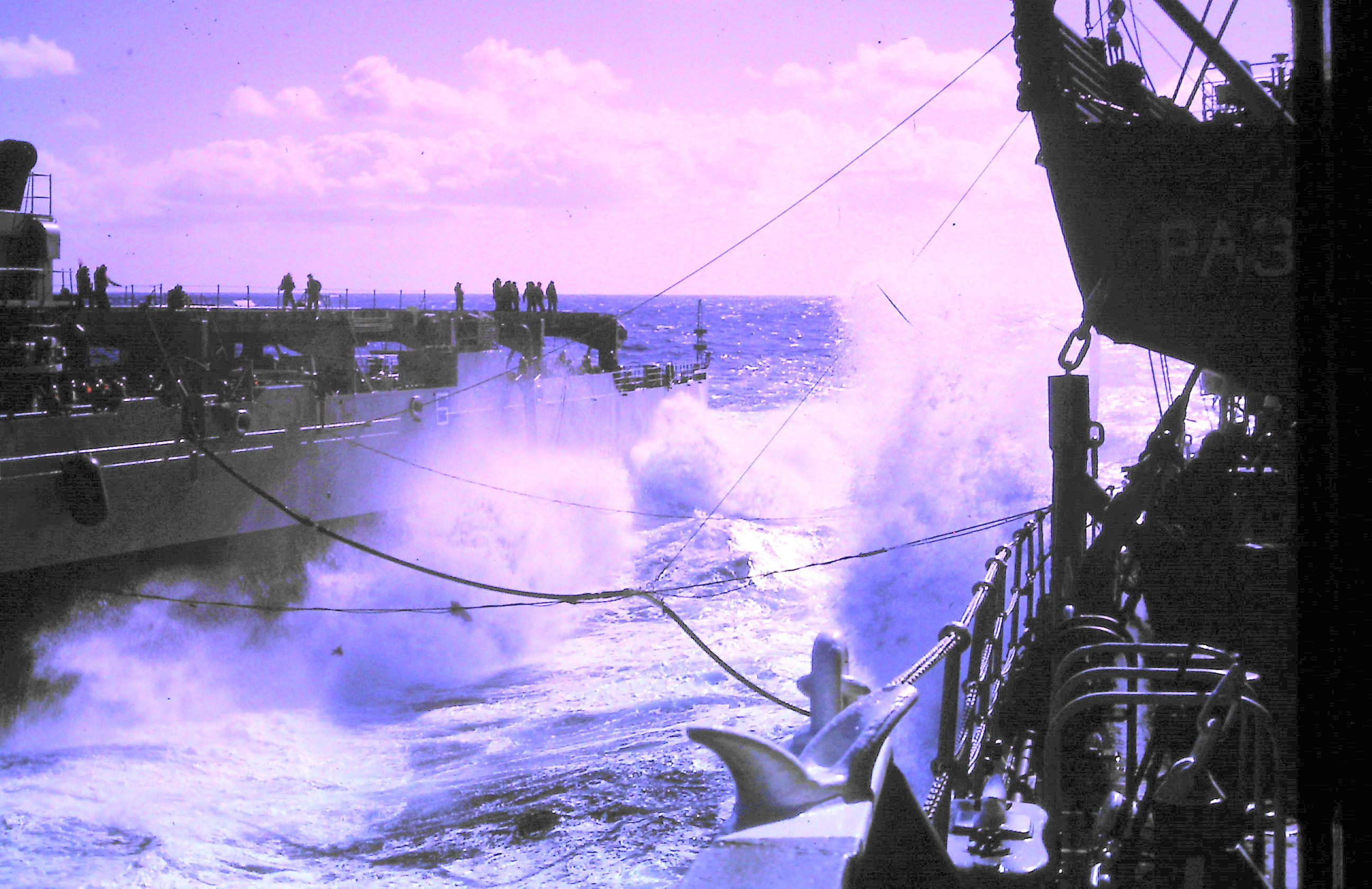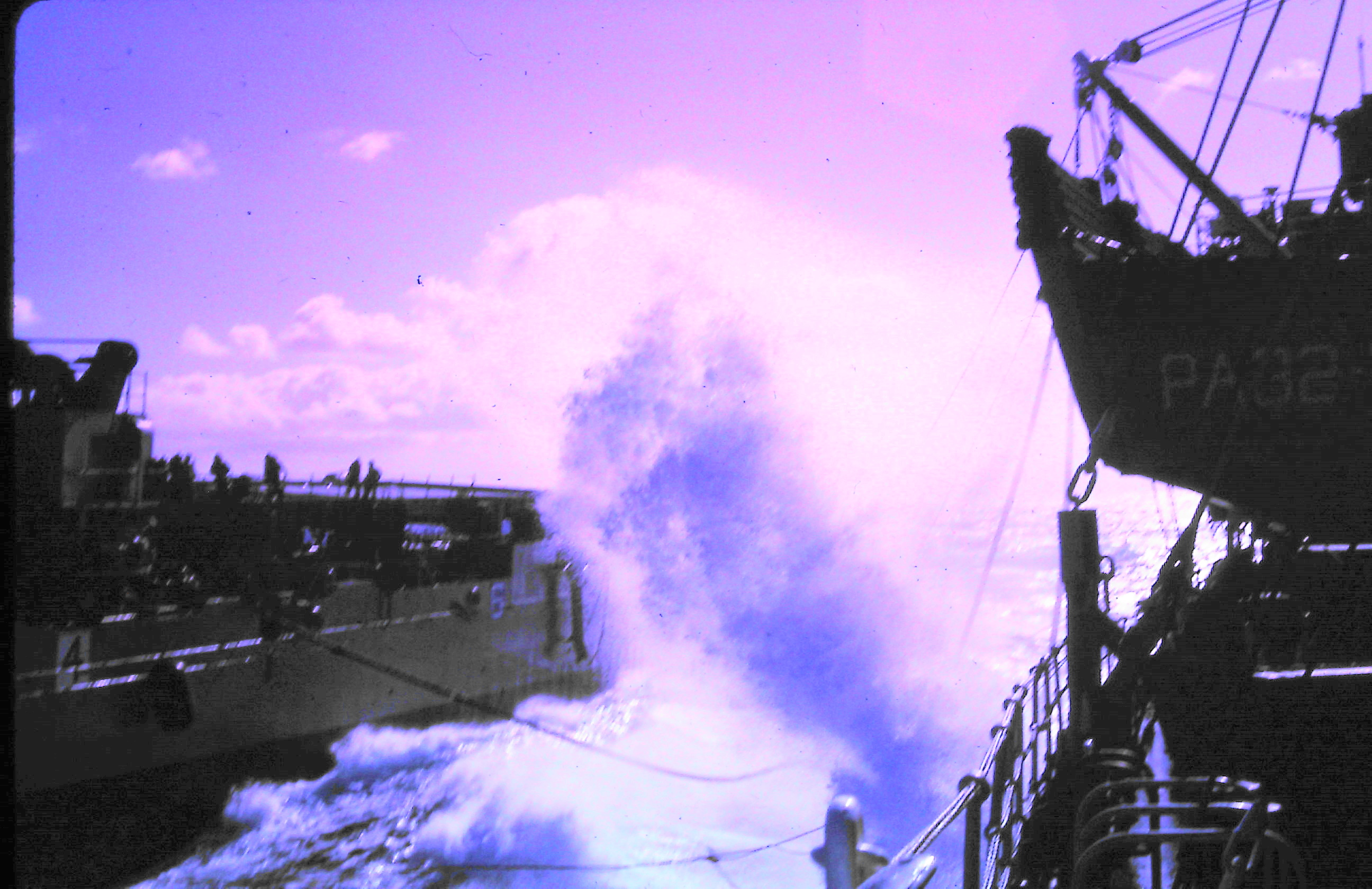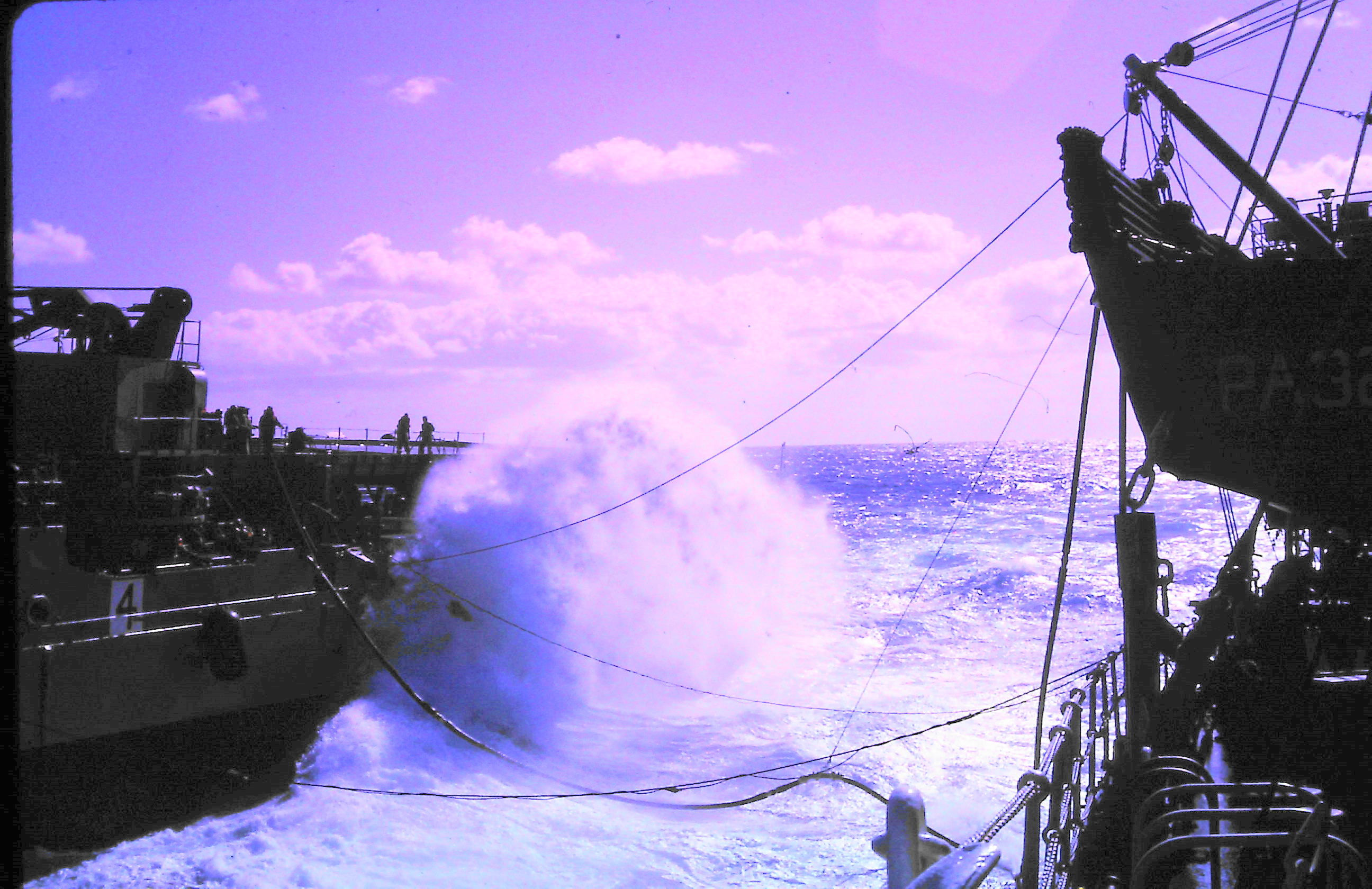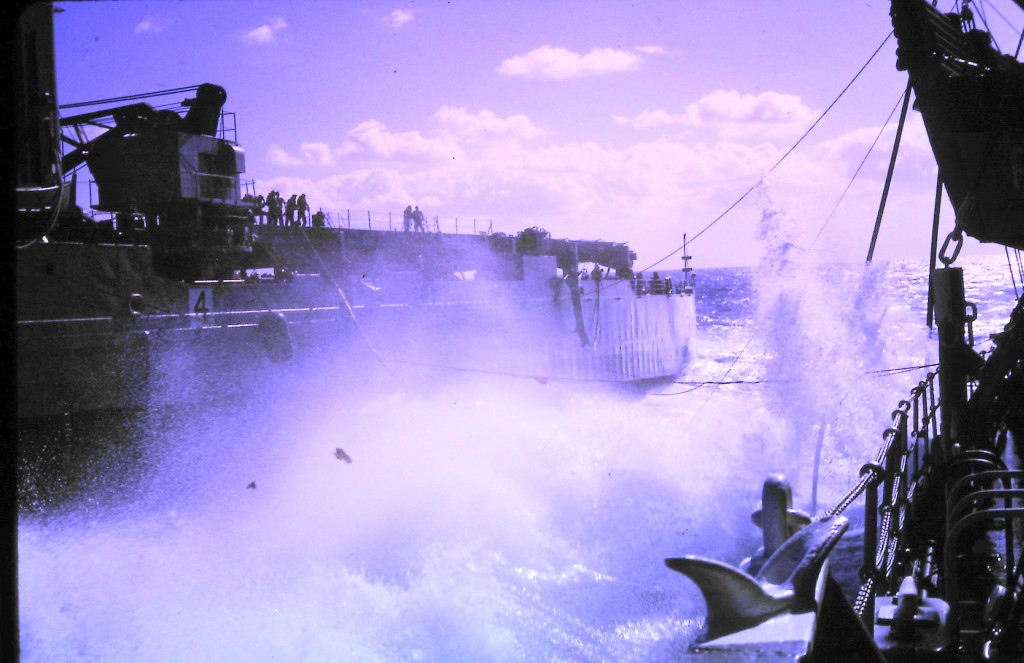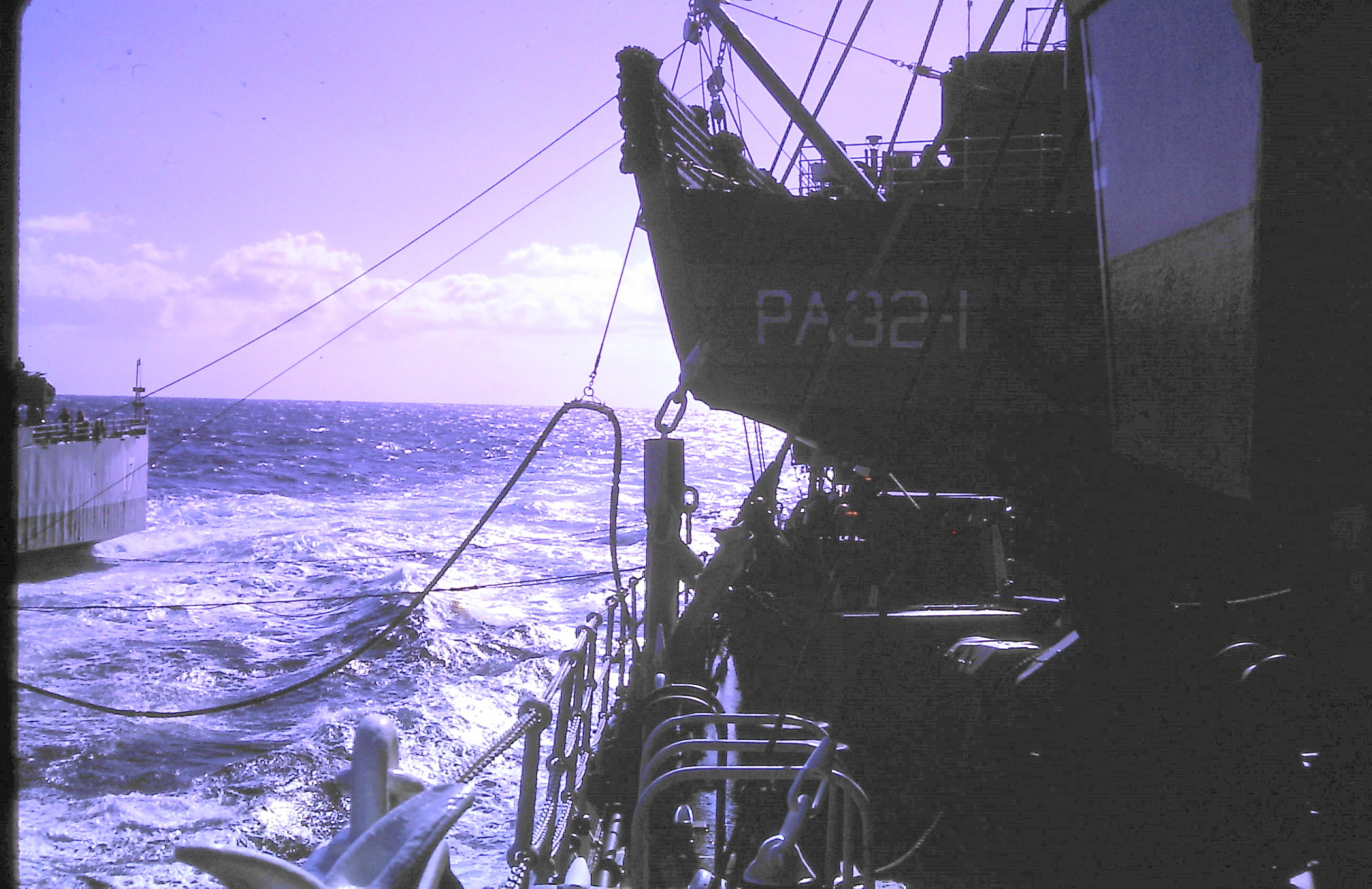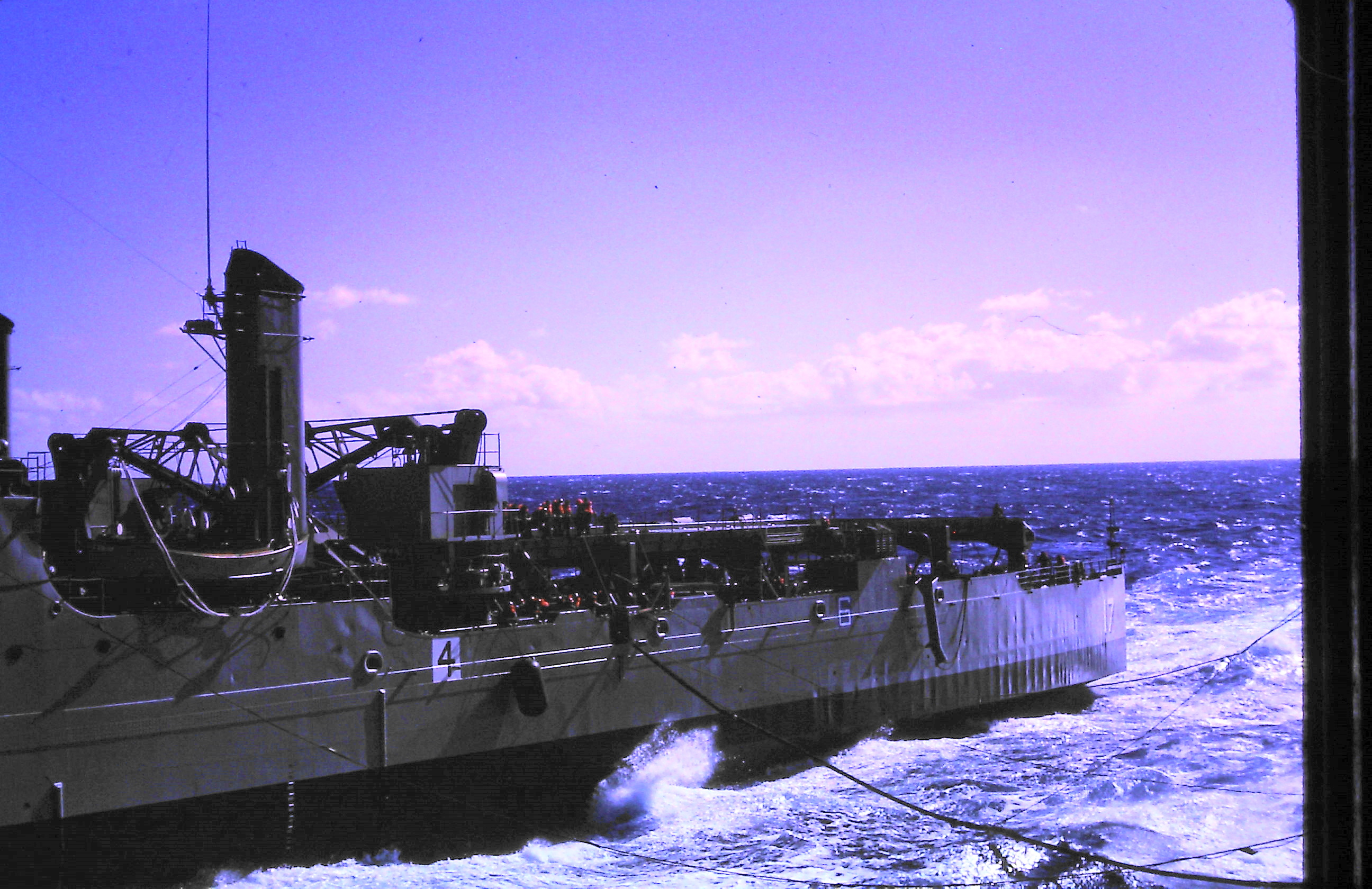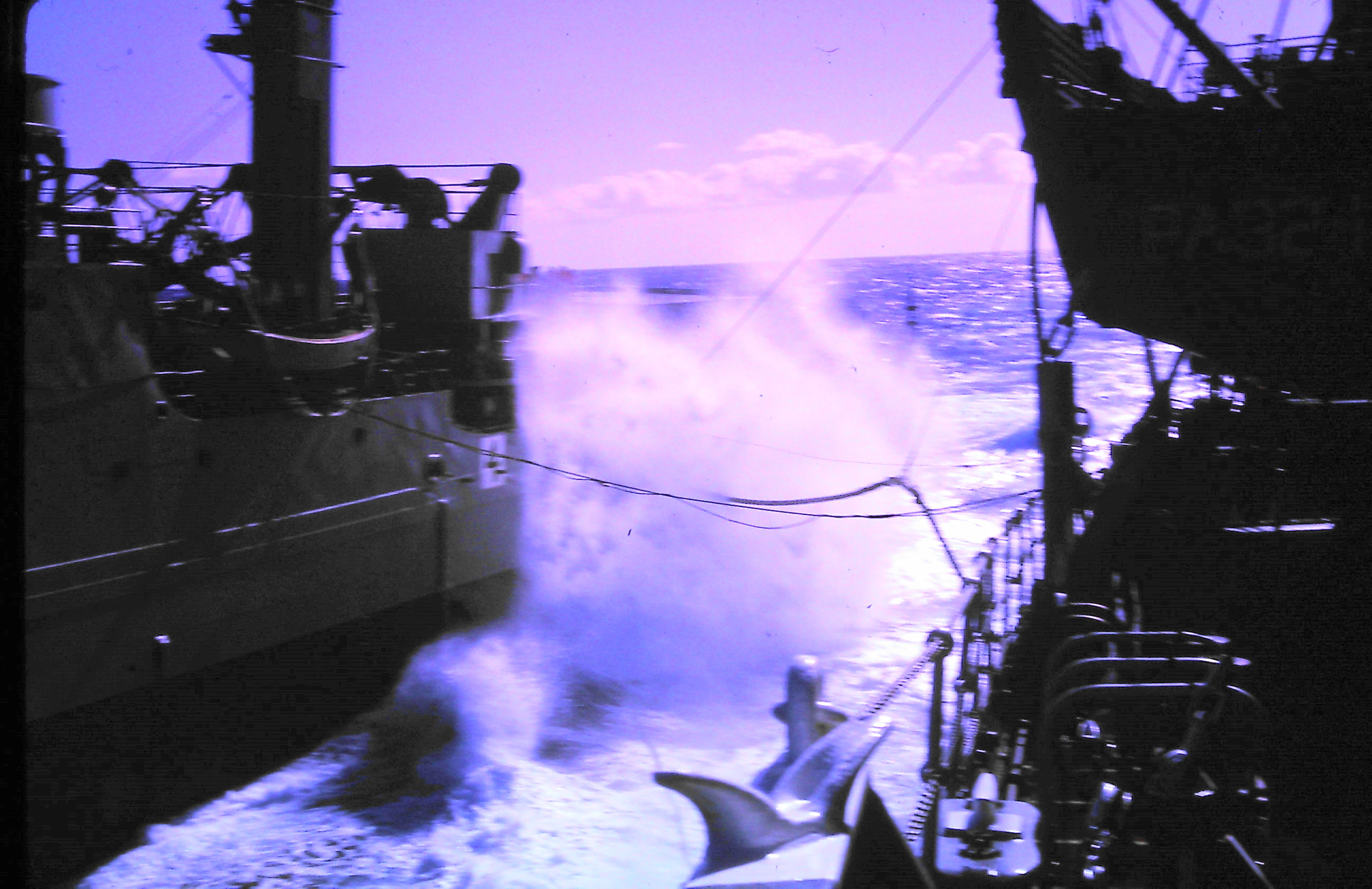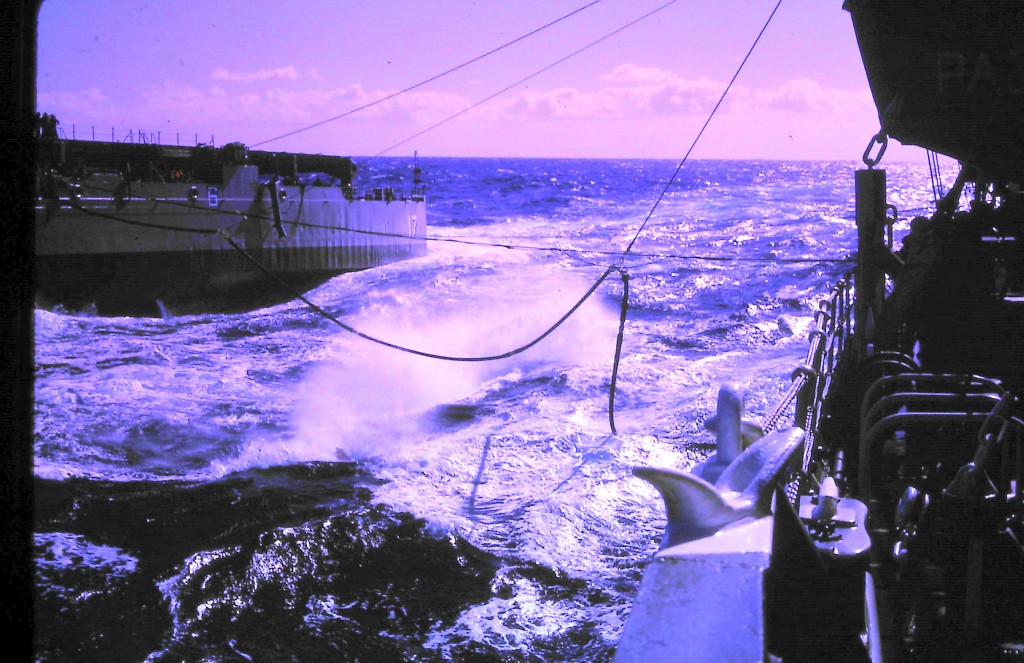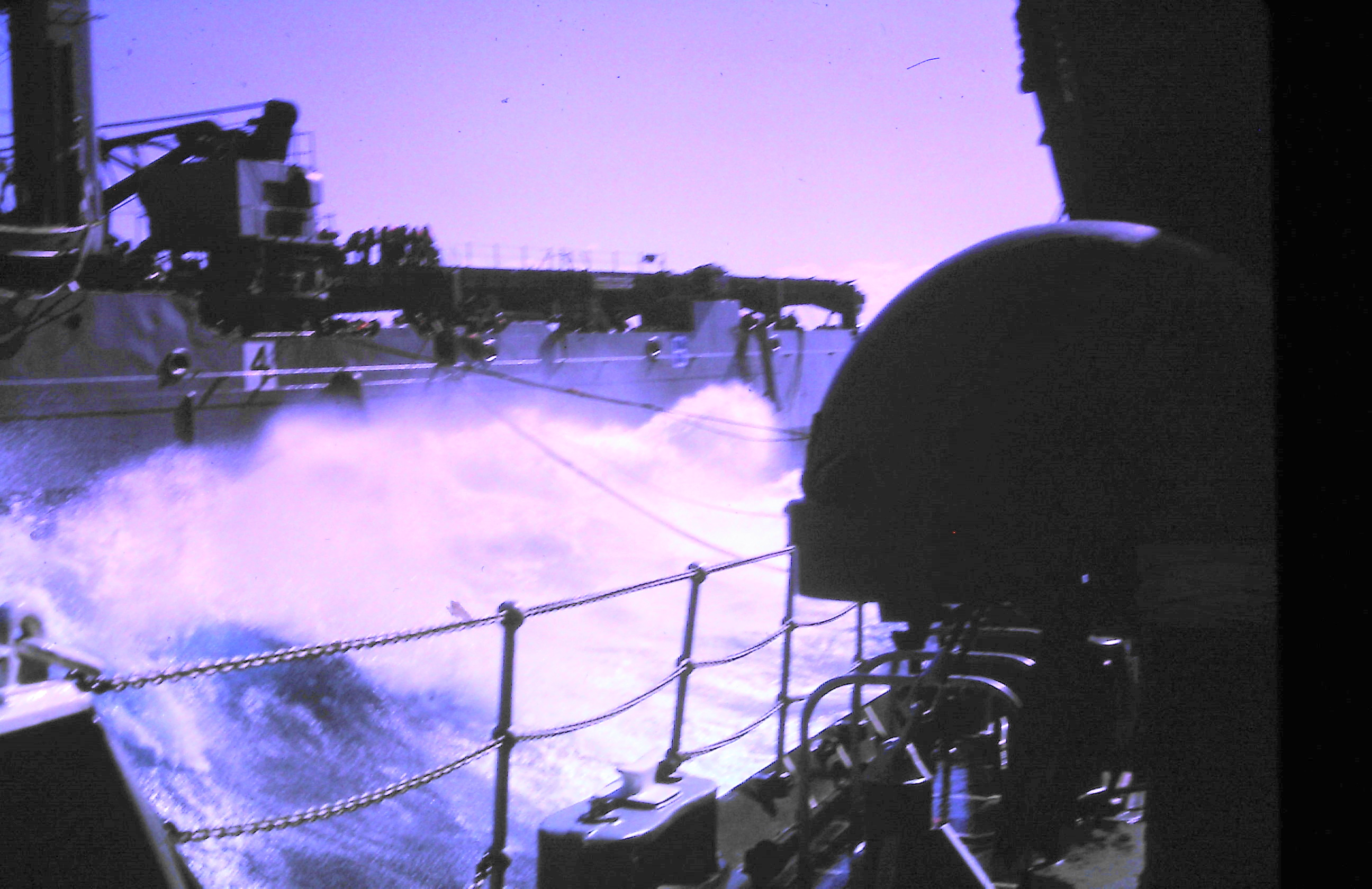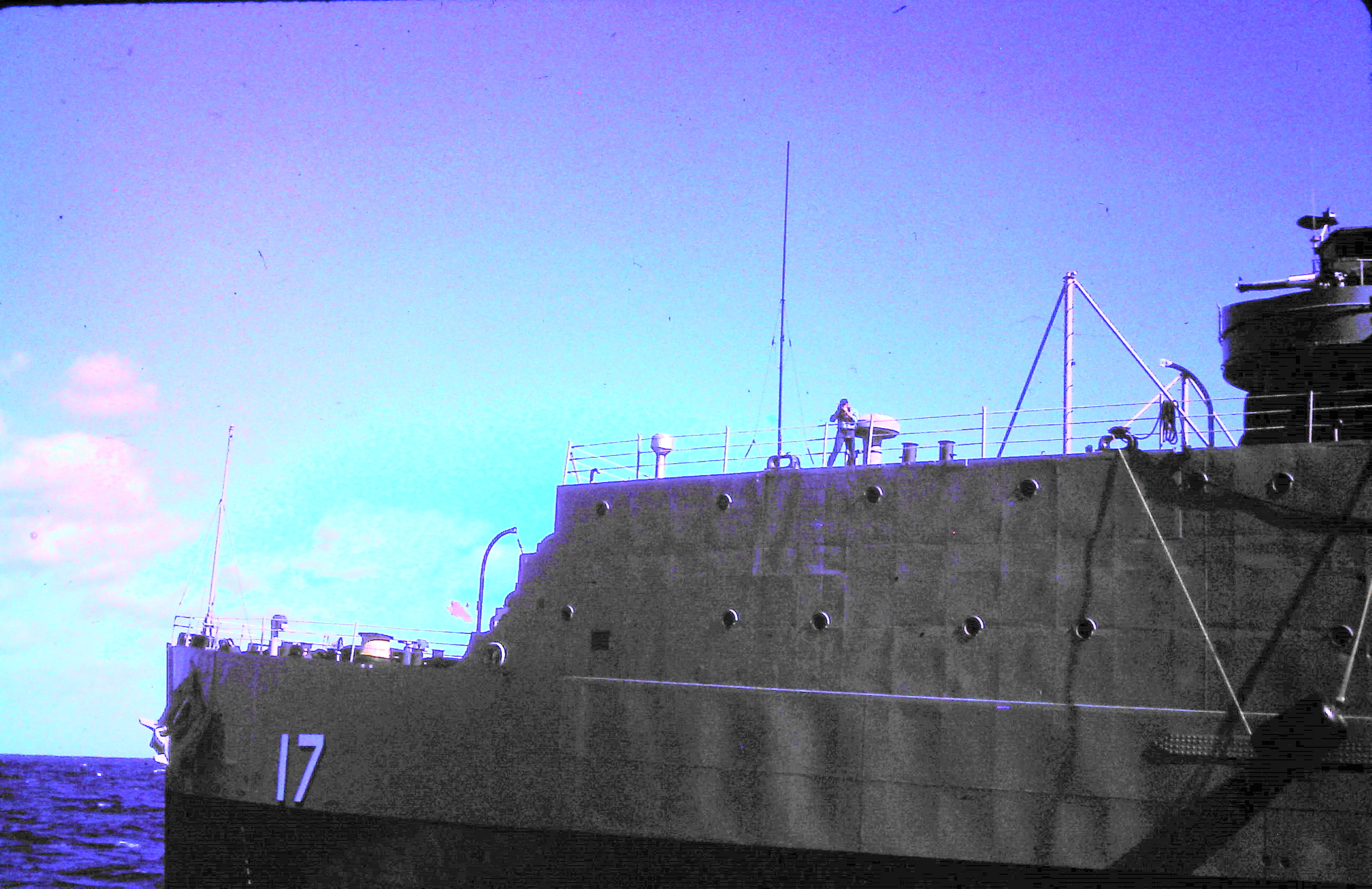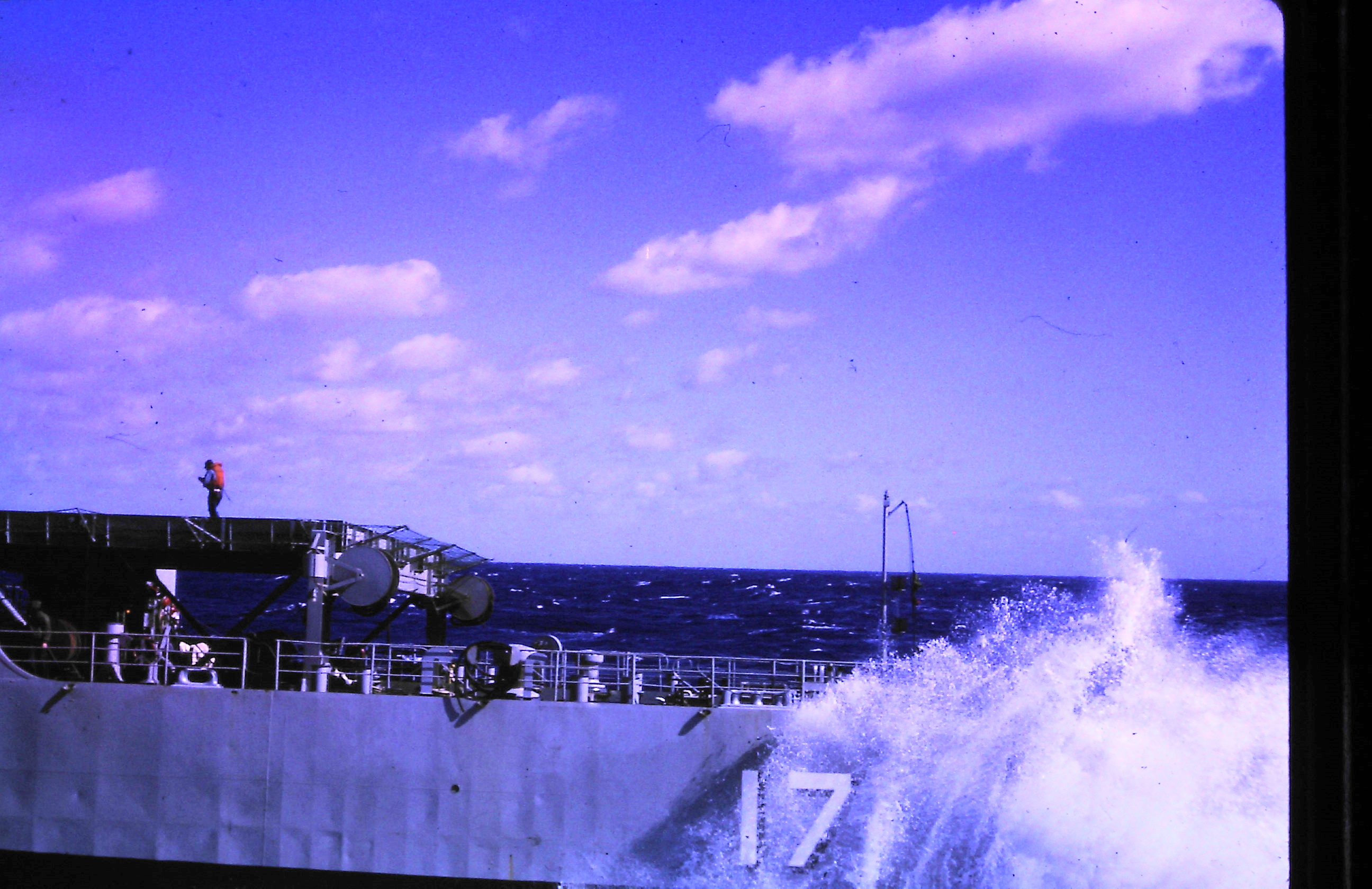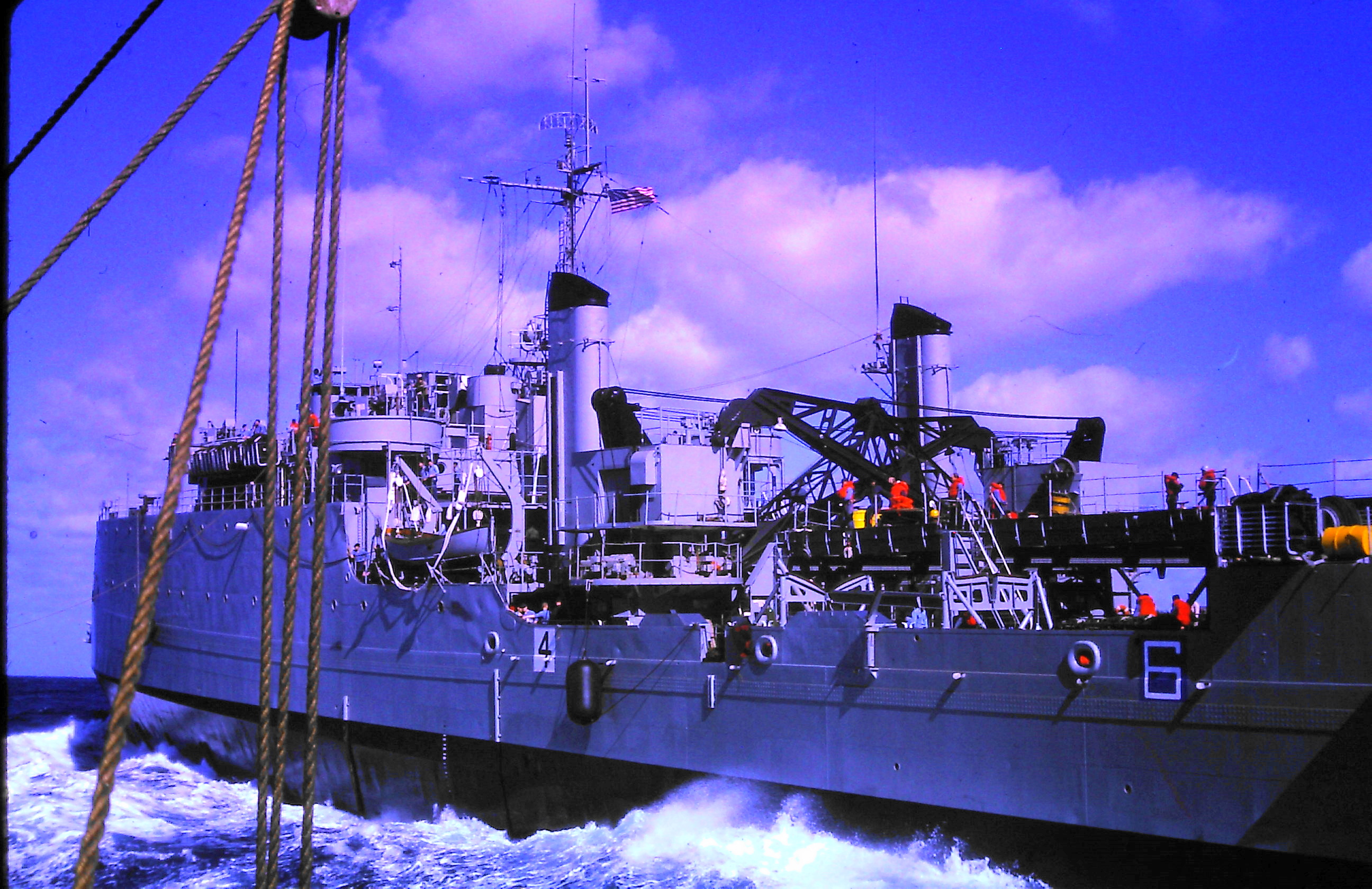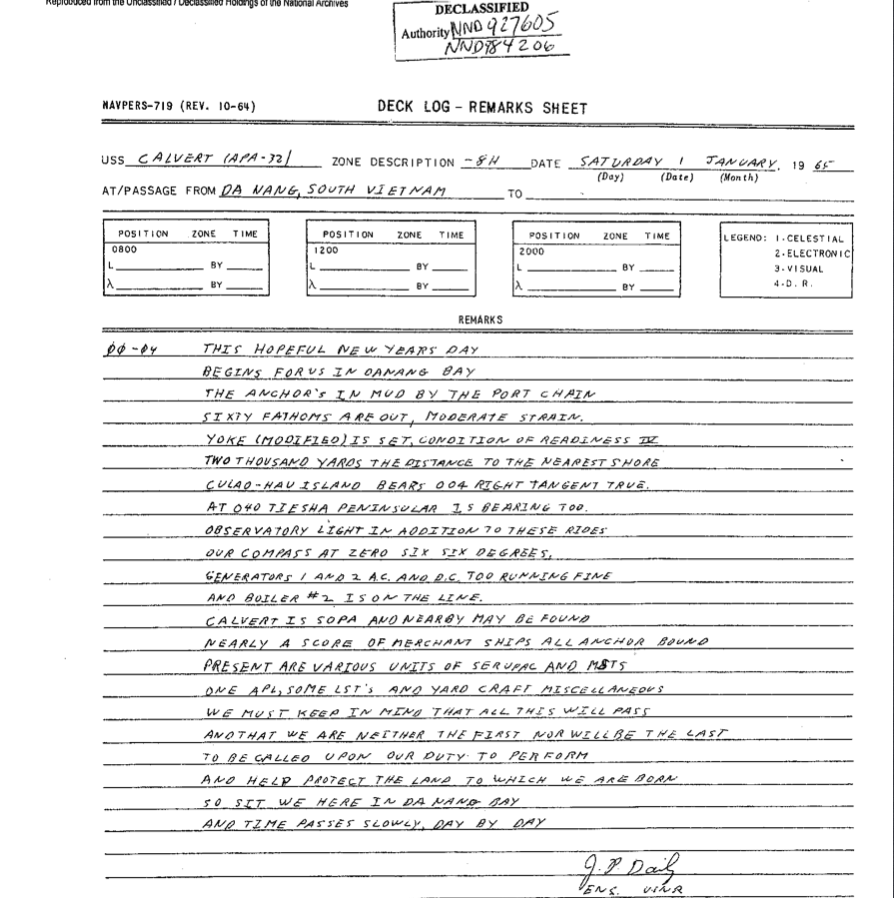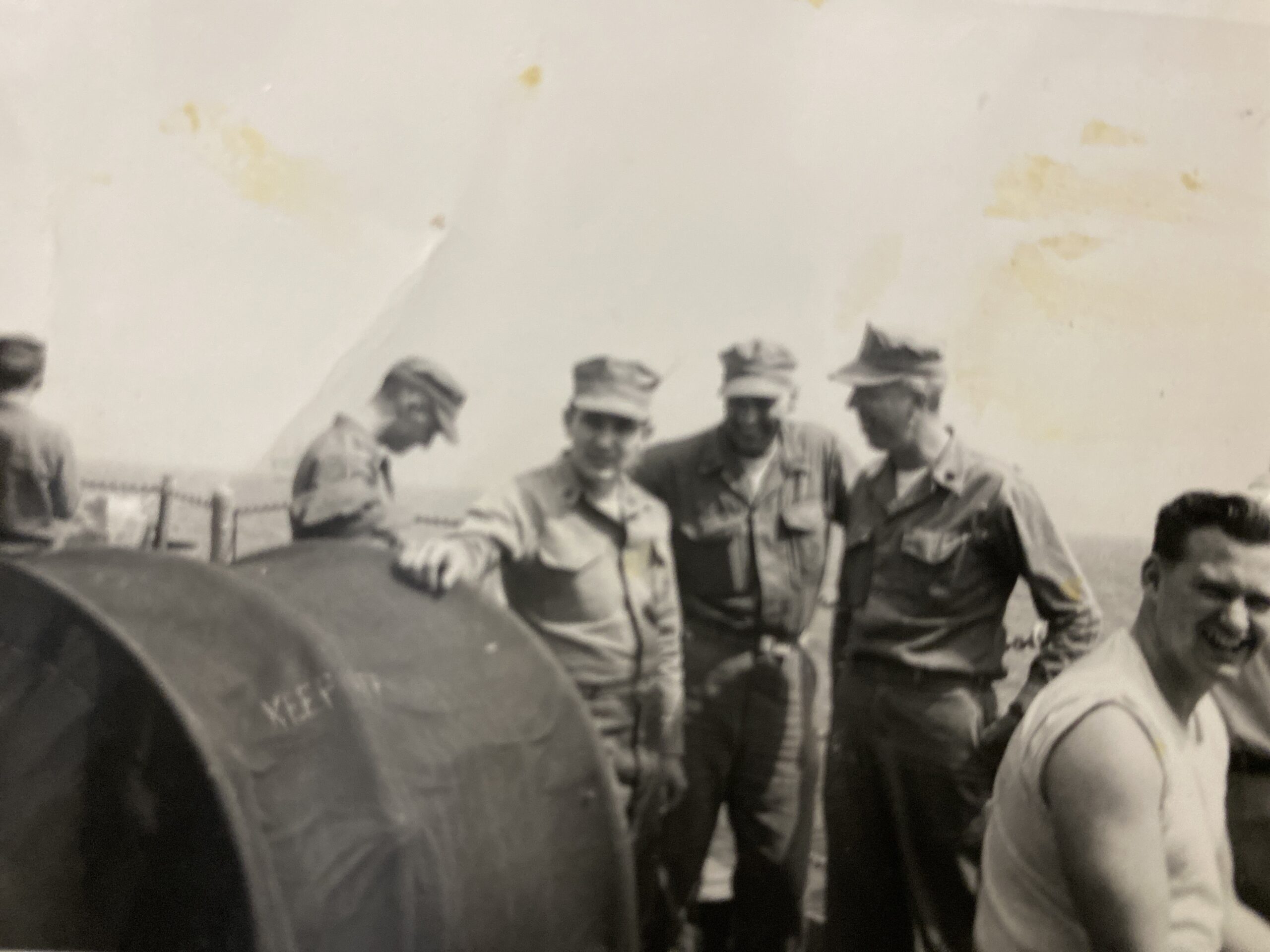Thanks to Wasey Broussard for providing an electronic copy of the latest Calversion, Volume 68, which is dedicated to John Cole’s work with the USS Calvert Association and his work publishing the Calversion. This volume includes contact information for the future of the Calversion and for the reunion coming up this September in Des Moines, Iowa.
Monthly Archives: June 2013
In Memory: John Cole, Author and Publisher of the Calversion
A very sad post tonight, and over a month late (as I just received the news), in reference to the passing of John Cole on May 17th, 2013.
By John’s efforts over the past 30+ years he built a community of 700+ people around the USS Calvert through his newsletters the Calversion and his work in organizing and running annual reunions across the United States. He will be missed by shipmates, former crew members, and family members of the men who served on the Calvert.
John typed each individual Calversion using his trusty typewriter and in-fact had purchased a new machine just last year to keep up his work. His use of a computer was limited to visits to his local library.
Here are a few recent articles regarding John’s great work for his community of Kenyon MN and his work in other avenues during his life:
- John’s Obituary
- Remembering John Cole article in SouthernMinn.com
- Kenyon History is in Your Hands Now article in Kenyon Leader
- Kenyon Leader’s article on John’s post card collection just prior to his passing.
- Red Wing Republican Eagle’s article on John following his passing.
John will be missed by so many people.
New Year’s Poem – 1966 – by Ens. J.P. Daily, USNR
Exercise Backpack – WEST PAC ’64 – Late Feb – Early March
In early 1964 (late-Feb into early-March) the Calvert participated in Exercise Backpack.
Calversion V25, P4: “Backpack, was a joint American-Taiwanese practice amphibious assault which took place at Che Cheng, Taiwan, in the late-February (1964) to early-March (1964) timeframe.”
Wikipedia entry for USS Windham County, LST-1170: “Backpack,” was a joint American-Taiwanese practice amphibious assault which took place at Che Cheng, Taiwan, in the late-February (1964) to early-March (1964) timeframe.
Beatrice Daily Sun – March 11, 1964: Backpack was a coordinated U.S. – Nationalist Chinese amphibious exercise conducted off the coast of Taiwan. Backpack was an exercise to test the amphibious capabilities and readiness of the forces of the Seventh Fleet and the Nationalist Chinese Navy. Prior to the assault, aircraft of the Seventh Fleet “softened” the beach defense. In addition, support ships conducted anti-submarine warfare exercises and the area surrounding the beachhead was cleared of obstructions and mines. “Backpack” was similar to exercises conducted periodically of the Seventh Fleet with SEATO and other allied nations in the Far East to improve proficiency in coordinated amphibious warfare operations and to maintain working relationships with allied nations.
Marine Alfredo “Sam” Garcia, aboard for Backpack
Thank you to Joe Garcia for sharing these photos of his father, Marine Alfredo Garcia, who was aboard the Calvert for Backpack. Alfredo is in the middle of the second photo, with his hand on the canvas, along with members of his unit.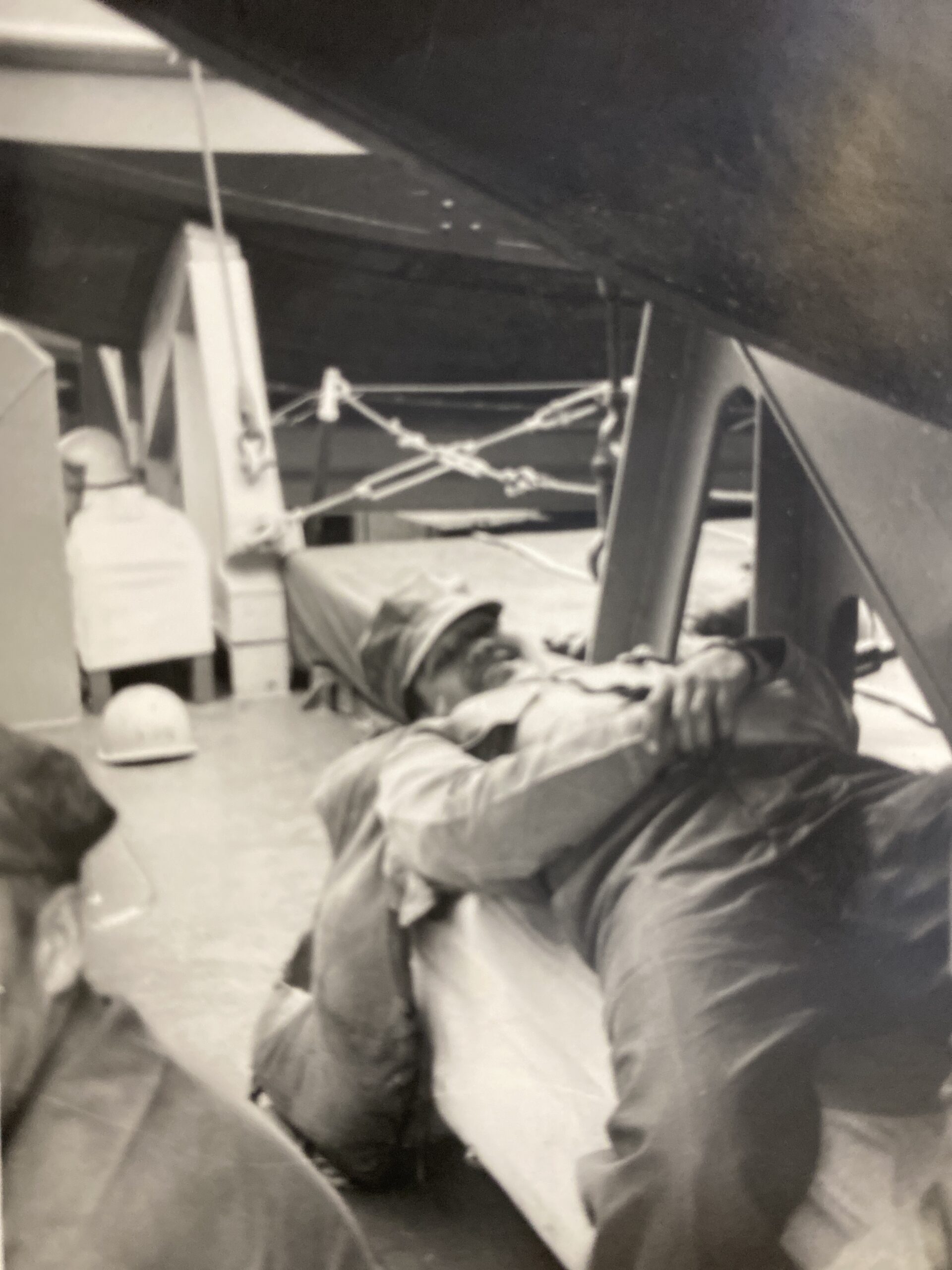
Marine Charlie V’s experience during Backpack
“I was on the Calvert as a 19 year old Marine in early 64 during Operation Backpack. I used to have pictures that looked just like these. I remember refueling in rough seas but I thought it was a tanker or maybe Oiler is proper, Not an LSD. I have great memories of the Calvert. We were in very high seas and to this day I always tell friends that I know what it’s like to look up and the ocean. I never felt in danger and in the end we were fine. I went from Japan to Taiwan on the Calvert and returned on the LSD Fort Marion in calm seas. Of the four ships I was on during my tour I remember the Calvert as being the most historic because of all the campaigns it had taken part in during WWII and Korea.” – Charlie V.
The Marines remained at Taiwan; The Calvert departed for Saesbo, Japan
Leaving the troops in Taiwan, in mid-March the Calvert headed for Saesbo, Japan for a brief period of rest and relaxation. Dave Cullen, A History of the USS Calvert, p31.
Replenishment drill with the USS Catamount (LSD-17) during rough seas during Operation Backpack, March 1964
Great photographs of the Calvert and the USS Catamount (LSD-17) in rough seas from late February or early March, 1964, during Operation Back Pack off the coast of Taiwan.
Steve Straka (MM2, “A” Division, 1962-1965) provided these photographs from his personal collection, taken while he was aboard the Calvert. Thanks also go to Wasey Broussard for providing the name of the Catamount and correction that this encounter at sea was not likely a refueling, but instead likely a transfer drill. Thanks to other contributors’ comments below, helping to set additional details for these photographs.
